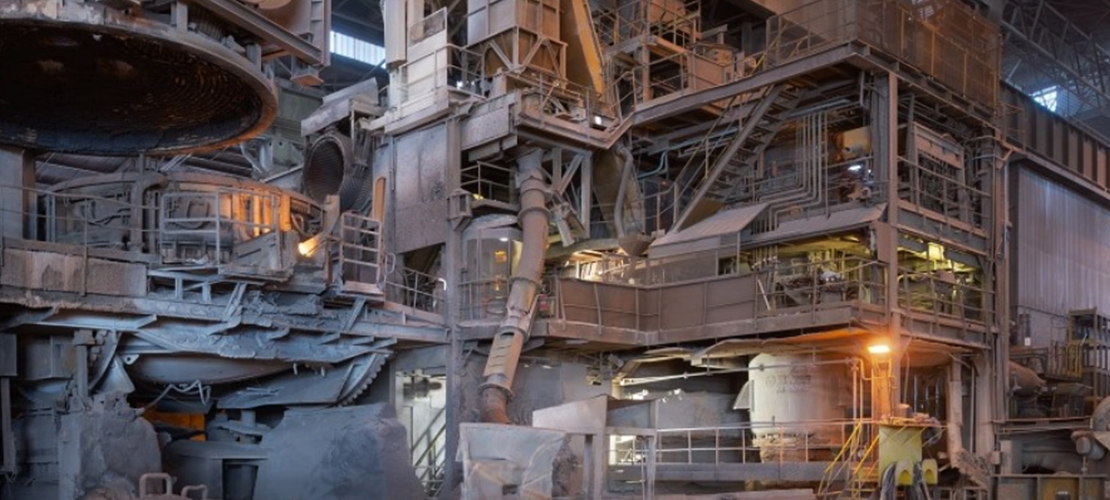Oct. 27, 2025

Ferrosilicon production electric arc furnace, also known as an ferrosilicon furnace or resistance furnace, used to produce ferrosilicon alloys using coke, steel scrap, and quartz (or silica) as raw materials. Ferrosilicon is produced by reducing smelting ore, a carbonaceous reducing agent, and a solvent.
Ferrosilicon is an alloy composed of iron and silicon, smelted in an electric furnace using coke, steel scrap, and quartz (or silica) as raw materials. It is widely used in the steel industry, for example as a reducing agent for low-carbon ferroalloys and as an inoculant for cast iron, aiding in the graphitization of ductile iron. The primary raw materials for ferrosilicon production include quartz sand. FeSi 75 is the most popular ferrosilicon alloy.
Ferrosilicon can also be used as an alloying element in low-alloy structural steels, spring steels, bearing steels, heat-resistant steels, and electrical silicon steels. It is often used as a reducing agent in ferroalloy production and the chemical industry.
Ferrosilicon is an essential deoxidizer in the steelmaking industry. High-silicon ferrosilicon or siliceous alloys are used as reducing agents in the ferroalloy industry to produce low-carbon ferroalloys.
Ferrosilicon added to cast iron can serve as an inoculant for ductile iron, inhibiting carbide formation, promoting graphite precipitation and spheroidization, and improving cast iron properties.
Ferrosilicon powder can also be used as a suspension phase in the mineral processing industry and as a coating for welding rods in the welding rod manufacturing industry.
High-silicon ferrosilicon can be used to produce semiconductor-grade silicon in the electrical industry and in the chemical industry to manufacture silicones, among other applications.
In the steelmaking industry, approximately 3-5 kg of 75% ferrosilicon is consumed per ton of steel produced.
Ferrosilicon furnace generally refer to high-temperature furnaces used to produce ferrosilicon alloys.
Their operating principle is generally as follows: they utilize high-temperature reduction and alloying reactions to transform raw materials such as quartz sand into FeSi alloys:
Main raw materials: quartz sand (SiO2), a carbonaceous reducing agent (such as coke, pulverized coal, or charcoal), and solvents/auxiliary materials.
Additives: Fluxes such as limestone, fluidizing agents, and other metals or alloying elements added according to production requirements.
Submerged arc furnaces typically heat the charge through heat generated by discharges between high-temperature electrodes;
Electric arc furnaces use carbon/graphite electrodes to release significant heat through an arc between the charge;
Resistance furnaces raise the temperature through convection or resistive heating within the furnace.
The target temperature is generally in the range of 1400–1900°C, depending on the furnace type and process.
Reduction Reaction: The production of FeSi is often exemplified by ferrosilicon. The core process involves reducing SiO2 to Si, which then combines with iron, carbon, and other materials to form FeSi alloys.
Typical simplified reaction (rough representation; the actual system is complex and multi-step):
SiO2 + 2C → Si + 2CO↑
Si + Fe, or in an alloying environment with a high Fe content, further forms the alloy phase in the FeSi mineral. At the same time, carbon reduction within the ferrosilicon furnace and the interaction between the charge and the material produce various iron-silicon, limestone slaking products, and CO/CO₂ gases.
The resulting FeSi alloy liquid or melt is poured, clarified, and separated inside or outside the furnace.
Common FeSi alloys are classified into different silicon content ranges, such as FeSi75 and FeSi75/50. The particle size and morphology are manipulated according to the requirements of subsequent steelmaking processes.
Temperature control: This is achieved through furnace temperature distribution, charge layer thickness, furnace atmosphere, and countercurrent/cocurrent devices.
Atmosphere Management: Oxidizing and reducing properties within the furnace are typically controlled to prevent excessive oxidation and carbon loss, and the generated CO/CO₂ gases must be handled.
Impurity Control: Modifiers, mineral materials, and in-furnace stirring/mixing are added to achieve uniform composition and alloying.
High temperatures, flammable gases, and dust risks require strict safety measures.
Gas emissions require a purification system to reduce CO, SO2, NOx, and other emissions.
If you have questions or requirements regarding ferrosilicon production lines, such as ferrosilicon production electric arc furnace, submerged arc furnaces, melting furnaces, or any other FeSi alloy production lines, Sanrui Electric Furnace can provide a more detailed solution.
Previous: What is LRF in Steel Plants?
Latest News
Nov. 03, 2025
Features & Principles of Ferrosilicon Production Electric Arc Furnace
Oct. 27, 2025
Latest Products
Customized metallurgical machinery and equipment range: Electric Arc Furnace, Submerged Arc Furnace, LF Refining Furnace, Vacuum Furnace, Induction Furnace, Dust Remove System, Water Treatment Equipment, etc. Providing the most advanced equipment integration services, metallurgical equipment can be customized according to different needs of customers, and production capacity can be adjusted according to customer requirements.
Electric Arc Furnace
Submerged Arc Furnace
LF Refining Furnace
VD / VOD Vacuum Refining Furnace
Induction Furnace
Furnace Accessories
Navigation
E-mail: anna@srfurnace.com
Tel: +86 159 2955 5868
WhatsApp: +86 159 2955 5868
Add:
Room 422, 4th Floor, Building D, No. 5, Phase I, Fengdong Free Trade Industrial Park, Xixian New District, Shaanxi Province
